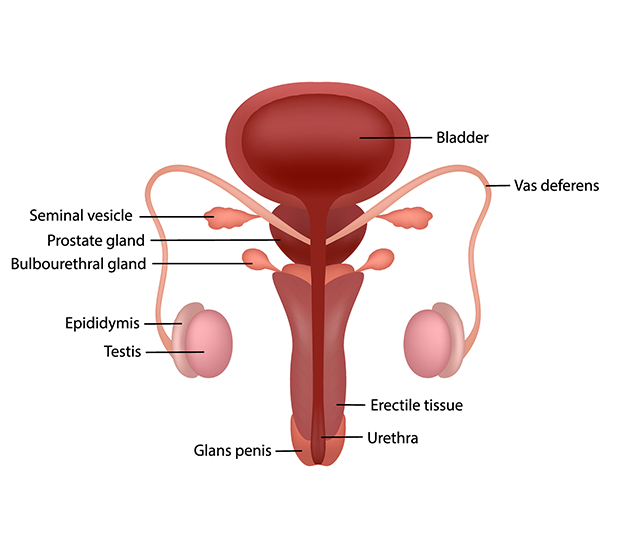
Phimosis develops when the foreskin of an uncircumcised penis can’t be retracted, or pulled back. Treatment may begin with steroid creams, but some patients may eventually need surgery.


What is Phimosis?
Phimosis is a condition of the penis that occurs in some adult men and boys who aren’t circumcised. Patients with phimosis are unable to pull back the foreskin. The penis may appear to have rings around the tip.
Living with phimosis may not cause any symptoms. However, when the condition does cause symptoms, patients may have an opening the size of a pinhole.
The two types of phimosis are physiologic and pathologic. Physiologic phimosis is associated with childhood and usually resolves as boys grow older. Pathologic phimosis is associated with a condition called balanitis xerotica obliterans (BXO).
Symptoms of Phimosis
Patients with phimosis may experience the following symptoms:
Soreness
Pain during erection or sexual activity
Redness or discoloration, which may occur when the penis is infected/irritated
Swelling (inflammation), which may occur when the penis is infected/irritated
Pain during urination (dysuria)




Causes of Phimosis
- Poor hygiene: Poor hygiene may be both the cause and result of phimosis. The penis may be irritated and men can experience pain when trying to clean it thoroughly. However, not cleaning the penis could lead to infection.
- Skin conditions: Eczema, psoriasis, lichen planus and lichen sclerosus may cause phimosis. When lichen sclerosus affects the penis, it is known as penile lichen sclerosus or balanitis xerotic obliterans (BXO).
- Preputial adhesions, or scar tissue: Scars may keep the foreskin attached to the tip (glans) of the penis.
- Injuries: Trauma to the penis.
- Infections: Sexually transmitted infections (STIs) may cause phimosis.
Treatment for Phimosis
Physiological, or congenital, phimosis typically doesn’t require treatment. Most boys grow out of it. The condition may also be referred to as primary phimosis.
Pathological phimosis, or secondary phimosis, requires treatment. In these cases, the physician may suggest applying a steroid cream to the skin of the penis.
The provider may suggest gently stretching the foreskin after about two weeks of using the steroid cream. Patients should also gently stretch the skin, pulling it back only as far as the patient is able to without causing any pain. The patient can also apply cream to the part of the glans exposed during stretching exercises.
Patients who don’t experience improvement from minimally invasive treatment may need surgery. If a pediatric patient is having difficulty, their provider might make a small cut in the foreskin so they’re able to pull it back. Adult patients with significant scar tissue may benefit from circumcision, a procedure done to remove the foreskin and free the glans.
Circumcision will likely be recommended for patients with phimosis caused by balanitis xerotic obliterans (BXO) who aren’t experiencing relief from the use of steroid creams.
Phimosis can cause discomfort during sexual activity for adults. In addition, BXO can cause urinary tract problems and lead to increased risk of cancer of the penis.

